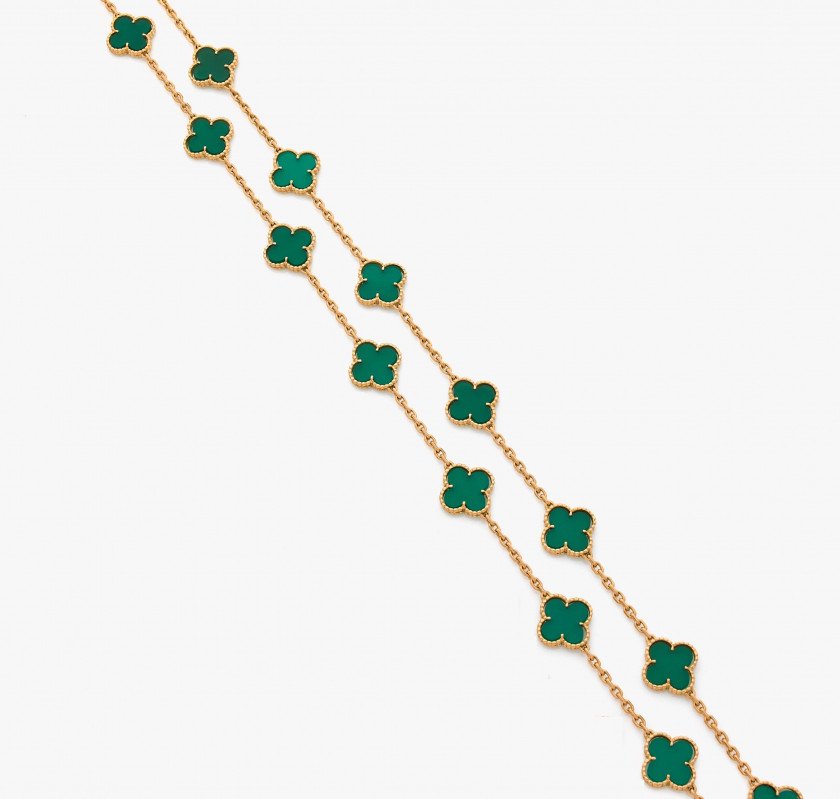Artcurial’s beginner guide to precious metals and french hallmarks
The Collector Mag team recently attended a jewellery workshop with french auction house Artcurial, in the centre of Milan, Italy. The intimate event, spearheaded by Julie Valade, gemologist and now director of the jewellery department at Artcurial where she has worked since 2005, focused the masterclass on the importance of understanding the value of precious metals in jewellery, whether it is your intention to buy or sell. Along with the extremely interesting Intel, we were privy to a sneak preview of some of the pieces which will be auctioned in Monaco, in July.
tools of the trade
‘One requires two indispensable accessories to understand the value of precious metals in jewellery: a good set of eyes and a magnifying glass’, says Valade. Judging by the guests’ bemused faces, we weren’t the only ones to think that a PhD in jewellery making was required. Before we knew it, we were equipped with a snazzy Artcurial magnifying glass and a silver tray appeared covered with some of the most beautiful jewels you’ve ever set eyes on. From vintage Cartier rings to Van Cleef & Arpels brooches - we were in jewellery heaven!
Each participant selected their favourite piece from the collection, then we were invited to use our magnifying glass to look for engravings, commonly known as hallmarks.
what are hallmarks
Hallmarks (or stamps) are small engravings embossed on jewellery, cutlery and giftware. These marks characterise the precious metal used and its finesse. In other words, an indispensable insurance for buyers or sellers to determine the value of a piece, but also to guarantee that the piece is genuine. Like bags, the world of jewellery is filled with counterfeits and it can be extremely difficult to distinguish precious metals by sight or touch alone. Each country has its unique standards and in this case hallmarks, so when attempting to decipher the hallmark of your jewellery, you must take into consideration where the piece was made or bought.
RECOGNISING PRECIOUS METALS
Whilst there are a multitude of different metals, the most frequently used are considered precious: gold, silver, platinum and palladium. These qualify as precious when they contain a minimum amount of the pure metal and guarantee the density of the metal. Note that precious metals are deposited onto alloy for flexibility.
Anyone who was good at chemistry in high school can very quickly determine the metal by observing its stamp, however it can be more challenging when a hallmark has been used instead.
Here we gather the most frequently used French hallmarks and their significance to help you gauge the value of your most precious pieces.
Gold Hallmarks
Seahorse:
The seahorse hallmark was created in 1994 and is the purest guarantee for gold at 24k. It is generally found on gold ingots, as pure gold isn’t sufficiently malleable to be used for jewellery.
Eagle:
The Eagle hallmark is the most frequently found hallmark on gold jewellery. Used on both new and vintage pieces of French origin, this hallmark guarantees jewellery in 750% gold (18k).
Scallop:
This hallmark exists since 1994 and it guarantees gold at 585% on new and second-hand works (14k).
Clover:
This hallmark exists since 1994 and it guarantees gold at 375% on new and second-hand works (9k).
Owl:
Since 1994, this hallmark has characterised second-hand jewellery of foreign or uncertain origin. It certifies that the jewel is made of at least 750% gold.
Silver Hallmarks
Amphora:
This hallmark guarantees silver at the highest level since 2022. Like with the seahorse for gold, the amphora is mainly found on ingots and is only relevant for new works.
Minerva:
This hallmark is the most common on silver jewellery, new or used. It guarantees works grading at 925% silver.
Swan:
The swan hallmark is reserved for imported second-hand items whose origin is unknown or uncertain. It exists since 1984. It is a hallmark for a minimum title inferior to 800%.
Platinum Hallmarks
Emperor Penguin:
This hallmark guarantees platinum with the highest title. It is essentially for ingots and can be found only on new works.
Dog:
This hallmark guarantees works in platinum at 950%. It is therefore the most commonly found hallmark on platinum jewellery.
Mascaroon:
Used for second-hand jewellery, of French origin as well as of unknown or uncertain origin, it guarantees platinum at a minimum title of 850%
Whilst understanding the hallmarks can give you an idea of the value and composition of your jewellery, it is always recommended to seek expert valuation particularly when deciding to sell a piece.
The Artcurial team offer tailor made support. Their understanding of the market is supplemented by in-depth research, and attestations by historians of the major jewellery houses. All these means are implemented to appraise, evaluate, promote and sell jewellery in the best conditions. They also use these competences to give advice on investments.
Artcurial past auction highlights
Since 2005, date of the first jewellery sale in the principality of Monaco, more than 10,000 pieces of jewellery have been entrusted to Artcurial for nearly 100,000,000€ in auctions.
Van Cleef & Arpels - Sautoir Alhambra - Sold for €20,800
Van Cleef & Arpels - Clip and earrings - Sold for €250,800


















